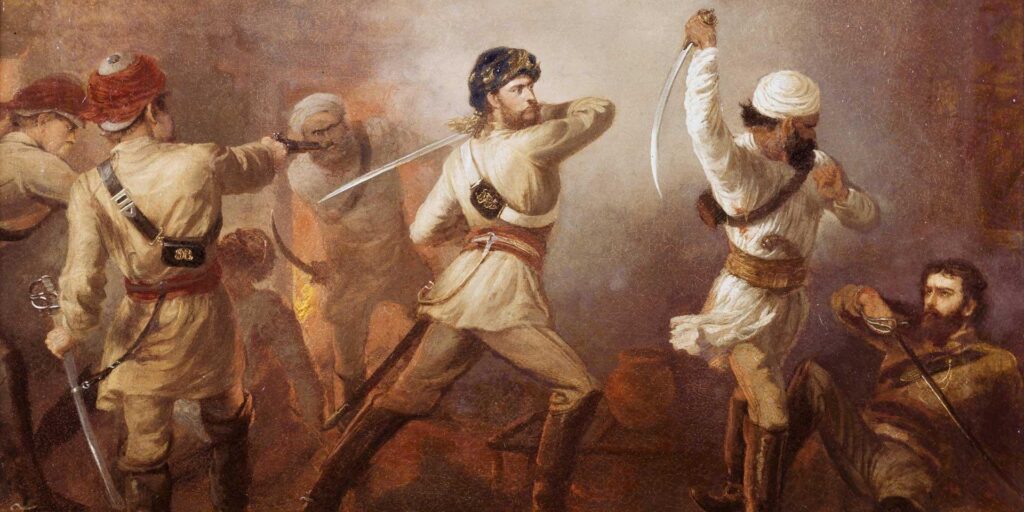Odisha in the Great Revolt of 1857 also known as the Indian Rebellion of 1857 or the Sepoy Mutiny, is a significant chapter in Indian history. It was a widespread uprising against British rule that saw people uniting across various regions to challenge the colonial authority. While the revolt is most commonly associated with cities like Delhi, Lucknow, and Kanpur, it is crucial to recognize the role played by different regions, including Odisha. In this blog, we will explore the contribution of Odisha during the Great Revolt of 1857.
Odisha, located on the eastern coast of India, was under British rule during the mid-19th century. Though it was not a major center of the revolt like Delhi or Lucknow, Odisha witnessed several instances of rebellion and resistance against British dominance. The people of Odisha, primarily consisting of farmers, artisans, and peasants, had their own grievances against British exploitation and the administration’s policies. The revolt in Odisha was shaped by both political and cultural factors, which influenced the participation and strategies adopted.

One significant aspect that contributed to the revolt in Odisha was the resentment towards the British interference in local customs and traditions. The British administration had taken measures that were seen as disrespectful and intrusive, undermining the cultural fabric of the region. Moreover, the British had introduced exploitative land revenue policies, causing economic distress among the people. These factors led to widespread discontentment, fostering a suitable environment for rebellion.
The initial spark of the revolt in Odisha can be traced back to Barrackpore, Bengal, where the news of the cartridges greased with cow and pig fat created outrage among the native soldiers or sepoys. Though the immediate consequences were felt in Barrackpore, the ripple effect reached Odisha. The sepoys stationed in Odisha’s cantonments became sympathetic towards the cause and refused to use the cartridge, resulting in their arrest and subsequent court-martial. This event further fueled the fire of resistance in the region.
The revolt in Odisha gained momentum with the participation of Raja Bakshi Jagabandhu Bidyadhar, a respected leader who mobilized the local people against the British. Raja Jagabandhu, earlier known for his role in the Paika Rebellion of 1817 against the British East India Company, emerged as a prominent figure in the revolt of 1857. He traveled extensively across Odisha, spreading the message of resistance and uniting people against British rule. He was able to gather a significant following and played a crucial role in organizing armed resistance against the British forces.
You can read our another post on Monumental Efflorescence of Ranipur-Jharial

Several other local leaders and zamindars joined the revolt, and many battles were fought between the rebels and the British forces. One notable engagement was the Battle of Niladri Hills near Puri, where the rebels fought fiercely but were eventually defeated. Despite facing numerous challenges and setbacks, the revolt in Odisha showcased the determination and resilience of its people in their struggle against British oppression.
However, it is important to note that the revolt in Odisha was not as widespread or coordinated as in other regions. The geographical isolation, lack of urban centers, and limited connectivity hindered a united front against the British forces. Additionally, the absence of large-scale participation from the sepoys stationed in Odisha’s cantonments also limited the potential power of the revolt.
The Great Revolt of 1857 marked a turning point in India’s fight for independence and sowed the seeds of nationalism. While the revolt in Odisha may not be as celebrated as some other parts of the country, it remains a significant episode in the collective memory of the people. The spirit of resistance, as witnessed in Odisha during the revolt, played its part in shaping the future course of the freedom movement in the region.

Writer A FAQ For Odisha in the Great Revolt of 1857
What was the role of Odisha in the Great Revolt of 1857?
Odisha played a minor role in the Great Revolt of 1857, with sporadic incidents of unrest reported in certain areas. However, the overall impact and involvement of Odisha in the revolt were not as significant as in other parts of the country.
Were there any notable leaders or rebels from Odisha during the revolt?
While there were no major leaders or rebels from Odisha who emerged during the Great Revolt of 1857, there were a few local leaders who organized smaller uprisings in their respective areas. However, due to limited support and resources, their efforts could not achieve significant success.
What were the reasons behind the limited participation of Odisha in the revolt?
One of the main reasons behind the limited participation of Odisha in the revolt was the relatively strong presence of the British administration in the region. The British had established effective control over Odisha, which limited the scope for large-scale rebellion.
How did the local population of Odisha perceive the uprising?
The local population of Odisha had mixed reactions to the uprising of 1857. While some sections of the society, particularly the peasants and lower castes, were disgruntled with the British rule and supported the rebellion, others remained indifferent or even opposed to it, fearing potential repercussions.
Did the Great Revolt of 1857 have any lasting impact on Odisha?
Despite its limited participation, the Great Revolt of 1857 did have some lasting impact on Odisha. The revolt inspired a sense of nationalism and resistance against British rule among certain sections of the society, which later played a role in the wider freedom movement in the region. However, the immediate impact on Odisha itself was comparatively minimal.
Conclusion
In conclusion, Odisha’s involvement in the Great Revolt of 1857 reflects the larger story of India’s struggle against British rule. The grievances, cultural pride, and socio-economic factors that fueled the revolt in Odisha remain essential elements in understanding the resistance against colonialism. The contributions and sacrifices made by the people of Odisha during this tumultuous period deserve recognition and serve as a reminder of the long and challenging journey towards independence.
